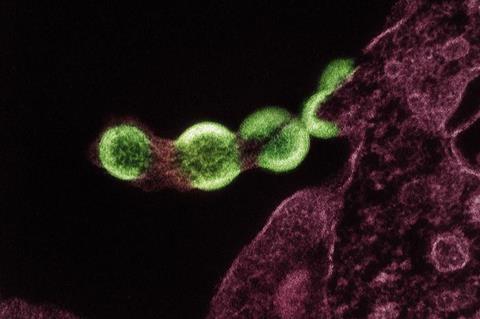A single laboratory-based HIV viral load test used by U.S. clinicians who provide people with long-acting, injectable cabotegravir (CAB-LA) HIV pre-exposure prophylaxis (PrEP) did not reliably detect HIV in a multi-country study.

In the study, a single positive viral load test was frequently found to be a false positive result. However, a second viral load test with a new blood sample was able to distinguish true positive results from false positive results for all participants whose initial viral load test was positive. The findings were presented at the 2024 International AIDS Conference (AIDS 2024) in Munich, Germany.
READ MORE: HIV vaccines tested in PrEPVacc fail to reduce infections
READ MORE: New HIV reporter model: Visualizing HIV viral dynamics in cells with dual fluorescence
“We are still learning how to optimize the package of services that accompany long-acting PrEP, including HIV testing,” said Jeanne Marrazzo, M.D., M.P.H., director of the National Institutes of Health’s (NIH) National Institute of Allergy and Infectious Diseases (NIAID). “The viral load testing findings observed in this study illuminate performance gaps in the current U.S. HIV testing algorithm for injectable cabotegravir PrEP.”
Effective prevention method
Long-acting, injectable cabotegravir PrEP, known as CAB-LA, is a highly effective HIV prevention method, administered by intramuscular injection every two months. Routine HIV status monitoring is recommended for any form of PrEP to ensure that people can promptly be aware if they acquire HIV while taking PrEP drugs.
In the United States, people taking oral PrEP can do this with point-of-care rapid tests and self-tests that detect HIV antibodies, or laboratory-based HIV testing. However, the Food and Drug Administration (FDA) and the Centers for Disease Control and Prevention (CDC) recommend that people starting or taking CAB-LA PrEP receive a laboratory-based viral load test that detects HIV genetic material in the blood.
This recommendation was made because CAB-LA can keep HIV antibodies at such low levels following acquisition that they might not be detected on an antibody-based test. To better inform the U.S. CAB-LA PrEP HIV testing algorithm, researchers examined the accuracy of viral load test results in an open-label extension of a large CAB-LA PrEP efficacy study.
Study extension
The open-label study extension followed 2,620 gay, bisexual, and other men who have sex with men as well as transgender women who have sex with men from the original study population. Twenty-nine participants acquired HIV during the study extension. In five of those 29 participants (17.2%), HIV was first identified by an isolated positive viral load test result. Of these five, two had received CAB-LA in the previous six months, while three had not received CAB-LA for more than six months. The remaining 24 participants had multiple positive tests that identified the presence of HIV.
Separately, 23 other participants had an isolated positive viral load test result, but 22 were later found to be HIV-negative in confirmatory testing, meaning their initial result was a false positive. One person’s status could not be determined at the time of analysis.
These data indicate that a single positive viral load test alone had a 9.1% positive predictive value—that is, a 9.1% chance of being true HIV acquisition rather than a false positive—in study participants whose last CAB-LA injection was within six months, and a 60% positive predictive value in participants whose last CAB-LA injection had been more than six months ago. Notably, the positive predictive value increased to 100% when study participants had a second round of confirmatory viral load testing with a new blood sample, regardless of the timing of their last CAB-LA injection.
PrEP interruptions
“A false positive can result in PrEP interruptions that create potential vulnerability to HIV acquisition, and more importantly causes profound psychological distress while a person awaits confirmatory results from a second test,” said study chair Raphael Landovitz, M.D., professor of medicine in the Division of Infectious Diseases at the David Geffen School of Medicine at the University of California, Los Angeles. “These concerns need to be balanced against the anticipated benefits of slightly earlier HIV detection.”
Previous analyses from this study showed combinations of two antibody-based tests had positive predictive values of between 83-100% in participants receiving CAB-LA PrEP. According to the authors, these findings help fill evidence gaps about the performance of available HIV testing tools to optimize CAB-LA PrEP implementation and global scale-up. The global NIAID-supported CAB-LA studies continue to inform HIV prevention policy and practice.
NIAID supports this open-label extension study with ViiV Healthcare, Gilead Sciences, Inc., and the NIH-funded HIV Prevention Trials Network (HPTN). NIAID and ViiV Healthcare co-fund the trial, which is conducted by the HPTN. ViiV Healthcare and Gilead Sciences, Inc., provide study medications. The NIH National Institute of Mental Health, NIH National Institute on Drug Abuse, NIH Eunice Kennedy Shriver National Institute of Child Health and Human Development collaborate with NIAID on this study.
More information about the study, called HPTN 083, is available on ClinicalTrials.gov under identifier NCT02720094.







No comments yet